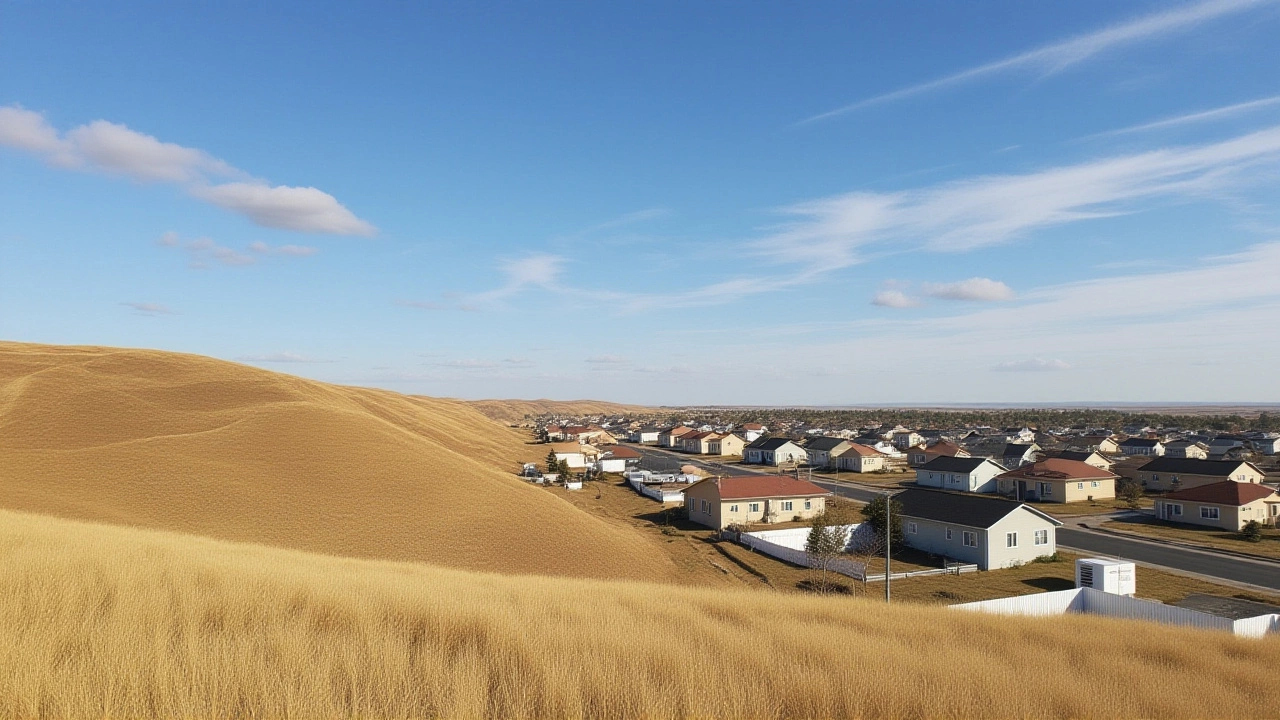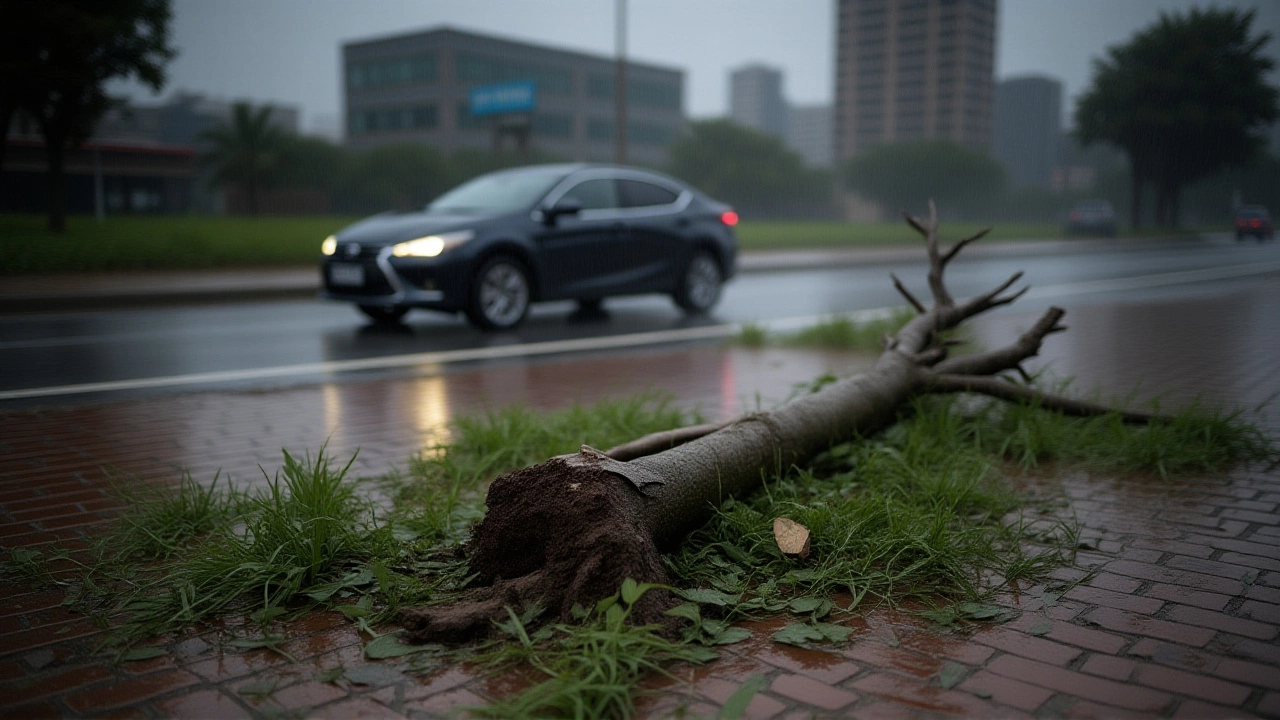When Typhoon Matmo barreled into southern China on October 5, 2025, the storm’s ferocious winds and torrential rain set off a chain reaction that rippled across three nations, leaving dozens dead and millions displaced.
The cyclone touched down on the eastern coast of Xuwen County, Zhanjiang, Guangdong Province, China at exactly 14:50 CST, with sustained winds of 42 m/s (150 km/h) and a central pressure of 965 hPa, according to the Guangdong Provincial Meteorological Observatory. Director‑General Chen Yuan had warned residents 72 hours earlier, yet the red alert still found many caught off‑guard as power lines snapped and highways flooded.
Path and Landfall in China
Matmo’s journey began as a low‑pressure disturbance spotted by the Japan Meteorological Agency on September 28. By October 1 it had become a tropical storm, and two days later it achieved full typhoon status, tracked by the Joint Typhoon Warning Center in Pearl Harbor.
In Guangdong, the storm ripped an iron‑clad roof off a warehouse at Bohe Port in Dianbai District, Maoming, sending it crashing to the quay. Emergency crews scrambled to restore power to over 200,000 households, while ferry services between Zhanjiang and Hainan were suspended for 36 hours.
Flooding and Dam Failure in Vietnam
Crossing the Gulf of Tonkin, Matmo dumped a historic 450 mm of rain in just 48 hours on Cao Bằng Province, Vietnam. Dr. Lê Thanh Thủy, head of the National Center for Hydro‑Meteorological Forecasting, warned that river levels would surpass the 2024 Typhoon Yagi benchmark — and they did. The Cầu River crested 0.85 m higher than the previous record, while the Bằng River topped the 1989 high by 1.2 m.
The worst hit was the That Khe 1 hydropower dam, operated by the Lạng Sơn Provincial Department of Industry and Trade. On October 8 the dam burst, flooding the town of Thất Khê and destroying 142 homes. Three people lost their lives in landslides triggered by the deluge — one in Thông Nông District, Cao Bang, and two in Quan Hóa District, Thanh Hoa. Four more remain missing, mainly in Định Hóa District, Thai Nguyen.
Widespread Devastation in Thailand
Matmo’s remnants merged with a monsoon trough over northern Thailand, unleashing daily rains exceeding 300 mm in twelve provinces. The Thai Department of Disaster Prevention and Mitigation reported 22 fatalities — the bulk in Uttaradit (12 dead) and Phra Nakhon Si Ayutthaya (5 dead). Over 370,000 people were affected; 48,000 households were forced from their homes, and 2,150 km² of cropland lay under water up to 3.5 m deep.
Director‑General Dr. Somsak Khaosa‑ard of Thailand’s Meteorological Department confirmed that the storm’s interaction with the monsoon will keep flood risks elevated through mid‑October.
Response and Relief Efforts
China mobilized the National Flood Control and Drought Relief Headquarters, dispatching 4,500 troops and engineers to shore up levees and restore electricity in Guangdong. In Vietnam, the Red Cross Society, led by Secretary‑General Dr. Bùi Huy Quang, set up 15 emergency shelters and began distributing 20,000 rice bags. Thailand’s Red Cross, under Princess Maha Chakri Sirindhorn, coordinated 3,500 volunteers to deliver water, medicine, and temporary housing.
By October 10, an estimated 12,000 emergency personnel were operating across the three countries, yet logistical bottlenecks still hampered aid delivery in remote mountain villages.

Economic Impact and Outlook
Preliminary assessments put the total economic toll north of $300 million. China’s Ministry of Agriculture and Rural Affairs tallied $185 million in crop losses alone in Guangdong. Vietnam’s World Bank‑backed damage assessment pegged infrastructure damage at $72 million, while Thailand’s Ministry of Agriculture estimates $43 million in lost harvests.
Analysts caution that rebuilding will stretch into 2026, especially as the region’s climate models predict more frequent Category 4‑5 storms. The combined pressure on food supplies could push rice prices up by 5‑7 % across Southeast Asia, according to a report from the Asian Development Bank.
What’s Next?
Authorities in all three nations are monitoring the lingering moisture plume. Forecasts suggest another bout of heavy rain for northern Thailand later this week, and the Guangdong Provincial Meteorological Observatory is keeping a “stand‑by” level for wind gusts through October 15.
Meanwhile, regional cooperation talks slated for the ASEAN climate summit in Bangkok next month will likely address joint flood‑risk management, a clear sign that Matmo’s legacy may shape policy for years to come.
Frequently Asked Questions
How does the flooding affect rice production in Vietnam?
The inundation of the Red River Delta and northern provinces has delayed planting by at least two weeks, trimming the 2025 harvest forecast by roughly 8 %. Smallholder farms, which make up 70 % of Vietnam’s rice output, are hardest hit, prompting the Ministry of Agriculture to request emergency seed imports.
What caused the That Khe 1 dam to burst?
Excessive runoff raised the reservoir level beyond its design capacity. Officials say a combination of aging infrastructure and inadequate spillway maintenance amplified the pressure, leading to a structural failure on October 8.
Are there any plans for improved early warning systems?
Yes. China, Vietnam, and Thailand have pledged $45 million to upgrade radar networks and river‑stage monitoring stations. The ASEAN Secretariat will oversee a joint data‑sharing platform aimed at delivering real‑time alerts to vulnerable communities.
What humanitarian aid is currently available for displaced families?
The Chinese military has set up 10 temporary shelters in Guangdong, while the Vietnam and Thai Red Cross societies are distributing food packs, clean water, and medical kits to over 150,000 displaced persons. International NGOs are also contributing cash assistance through the UN OCHA.
Will Matmo’s aftermath affect travel plans in the region?
Airlines have cancelled several flights to and from Guangzhou, Hanoi, and Bangkok until mid‑October. Road closures on major highways in Guangdong and northern Thailand remain in place, so travelers are advised to check local advisories before booking.






